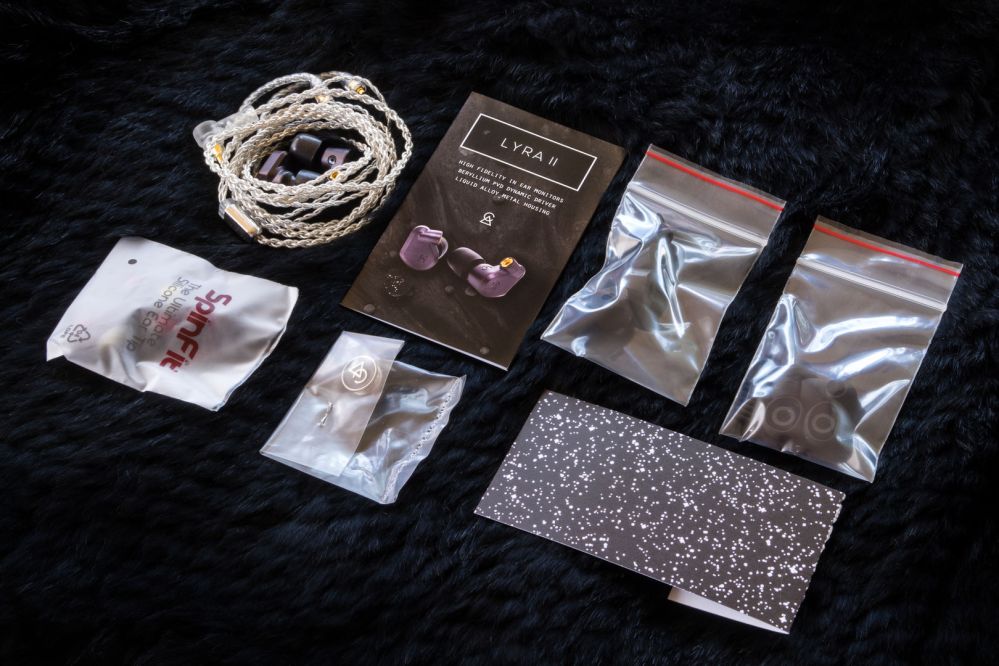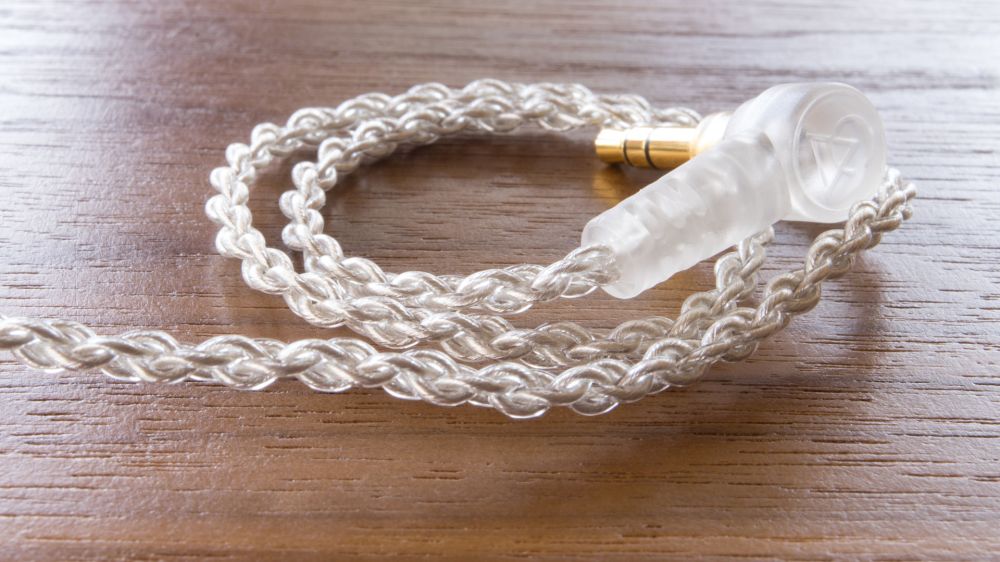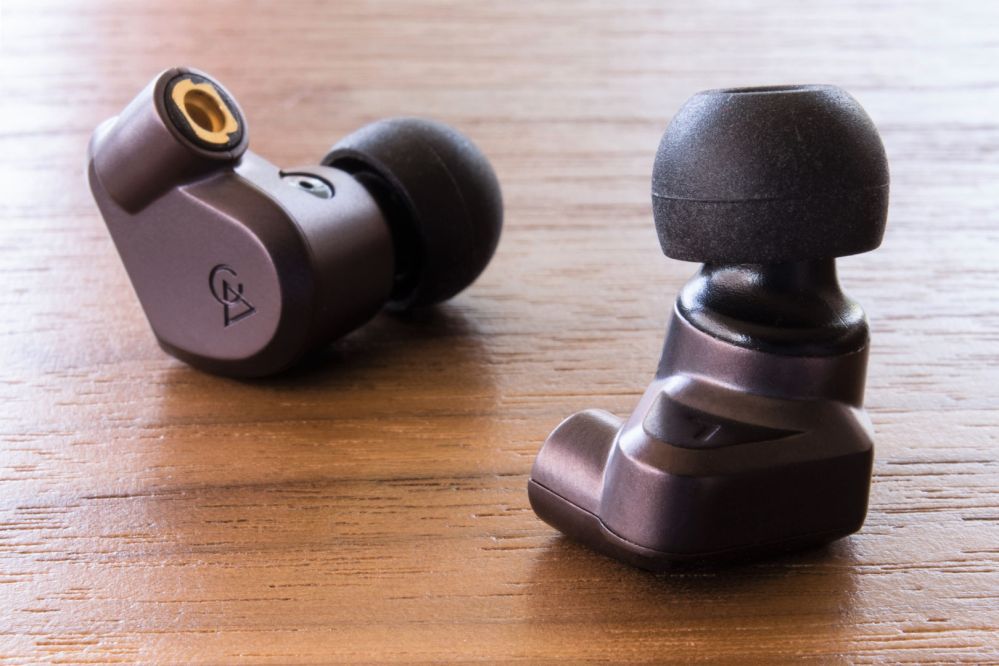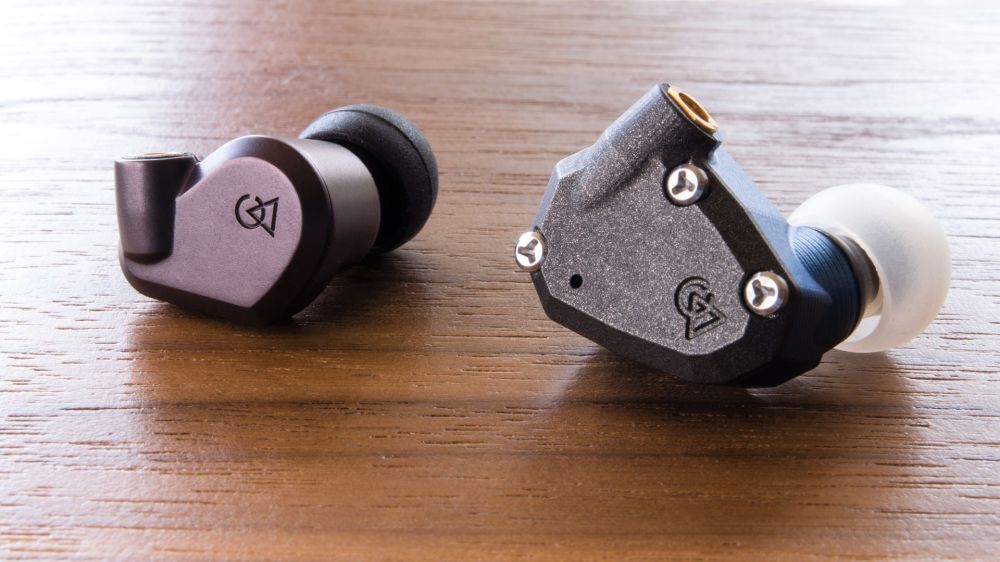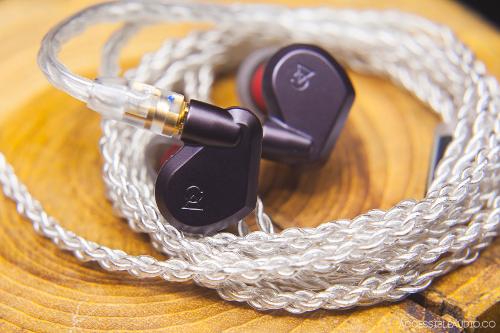Hi everyone, Before I start the review, I would like to thank Campfire Audio for making this awesome IEM.
This review is made by myself based on my observation and listening pleasure of The Lyra 2 and Lyra (Mostly Lyra 2) for a bit over a month.
I have no affiliation to Campfire Audio in any way and everything said here are true facts, based on my experience and opinion of course.
The pricing of Lyra 2 in Australia is 1099 AUD, as for The lyra, I can’t exactly remember but I think its in 800+ range, but no matter as it has been replace by Lyra 2 so the review will be made according to these data.
I can say outright that both IEMs are quite nice, but to simplify very quickly, I do think that the Lyra 2 Is overall better than Lyra, this will be explored as critically as possible in the review below.
The Lyra in this model is the second revision, evolution of the lyra’s
Lyra -> Lyra (2nd revision) -> Lyra II (3rd revision)
I never heard the first gen so no comments on that one.
INTRODUCTION (If you read my other review, you can skip this lol)
I'm an Indonesian working as a Web/PHP Developer in Melbourne, Australia.
Other than programming/coding, listening to music is another one of my hobby.
When I start my headphone hobby, music listening has been a very rewarding experience for me and has helped me in many aspects of life other than music enjoyment, although, with the booming price of high end headphones/IEM, it has become a bit of a heavy hit on my wallet >_<.
Starting from almost 4 years ago I've been a big fan of metal music, and nowadays my everyday music listening always incorporate metal tracks, I guess you can call me a Metalhead although I wouldn’t describe myself as the most extreme head-banging type, I also listen to other genres occasionally, but metal music is my focus.
I don't actually listen to all kinds of music, for example, Classical music, therefore it is important to understand that this review is based on my observation on the kinds of music I like, and those are mainly:
- Metal (many type, mainly the extreme one (Death, Doom, Black, Extreme Prog), like 95% off the time)
- Rock / Metal (mostly Porcupine Tree, Steven Wilson, Riverside(rock/metal), Radiohead or something like it)
- EDM (Mostly trance, uplifting)
- Jazz (Norah Jones, Diana Krall and the likes)
- Indonesian Song (it's basically the Indonesian version of pop, guitar used is mostly acoustic guitar, sounds natural and relaxing however, mastering of the song is usually poor, this is good to test how good a headphone/IEM handle poorly recorded material)
Genre's excluded from my impressions (I never / don't listen to these types of music anymore)
- Rap
- Classical
- Bollywood stuff
- Reggae
PACKAGING
The box is typical Campfire audio, Space themed colored thick carton that enclosed the leather/cloth carrying pouch(depending on your product), with fluffy cushion insides to protect the IEMs.
Model name is described at the front of the box using stickers, with some little descriptions on it.

 STORAGE CASE/POUCH
STORAGE CASE/POUCH
Very nice and practical, it has soft/fluffy materials in the interior, to protect the IEMs, I found the protection to be superb, and is quite slick. Some competitor uses hard-case plastic for their products which is bulky and possibly better for protection, but less practical and not as easy to take around (bigger, heavier, etc).
No complain whatsoever, I prefer this rather than bulky case.


the black one is Lyra II's
ACCESSORIES
3.5 SE terminated cable (SPC LITZ cable for Lyra II)
2 Velcros for cable management.
Eartips (4 spin fits, 3 silicone, 3 foam)
2 tiny red pouch (possibly to store the tips once opened)
CA pins
IEM cleaning tool
Storage Case/Pouch
Documentations
The treasure box itself
Warranty card ( Lyra II only )
BUILD QUALITY, Comfort and Ease of use.
The IEM itself utilize a single dynamic driver. The driver is made of Beryllium which is a very expensive material, Full size headphone that use beryllium for its driver construction is priced very highly (ehem ehem Utopia), not so for the Lyra II though, I think the pricing is alright. Other than that Beryllium is also toxic for humans, Ken must have put a significant effort in the construction of this IEM and also safety for his staff, and the end result is excellent.
Quick google research on Beryllium’s negative effects:
“People who work closely with beryllium as part of their employment have the greatest risk of developing health effects from beryllium. However, people who have had only infrequent exposure to beryllium may still develop health effects. Some individuals develop health effects shortly after exposure, while others may develop health effects many years after exposure has stopped.
Once a person has been exposed to beryllium, they have a lifelong risk of developing disease even if exposure stops.
Beryllium usually affects the respiratory system, although it can affect other parts of the body as well. Listed below are different types of illnesses or health effects associated with beryllium.”
The housing is excellent, Liquid Metal alloy casing that feels premium and more expansive than plastic materials that are used by some competitor, the paint used also feels very high quality, some ergonomics concern of the housing of other models has been addressed here, the new housings has no hard edges, inserting ear-tips is way easier and less bulky ensuring comfort on the ears.


the one with Thicker Cable is Lyra II
The cable of the Lyra is still using the thinner cable, while Lyra 2 is using the higher quality one (SPC Litz) albeit being a little shorter(some cost saving measures here), but much less prone to tangling and most likely provide better sound quality and durability.
I just wish the cable in Lyra 2 to bit a little longer as it can be quite short in some situation, especially for taller people.
Over the course of the review period, there was 1 day where I hear some ticking noises in the Lyra 2, this could because of many thing, it could be a phone glitch or maybe a driver flex phenomenon as it is using a dynamic driver, Driver flex on dynamic driver IEM’s is a common side effects on Dynamic Driver IEMs, as long as it doesn’t persist, there is nothing to worry about here, in my case the ticking noises disappears the next day, but it’s worth mentioning here.
Noise Isolation is good despite the existence of the ports, I use it when commuting on a bus and train, it blocks the outside noise nicely, at work people usually tap me in the back to get my attention when working, so I guess that’s saying something.
SOUND ANALYSIS
The Signature
The Lyra 2’s signature according to my ears is on the warm side, but still has some sparkles at the top with slightly forward vocals that is interestingly quite exposing of the source. I feel some dips in the lower treble region compared to the mids and the bass as I found that in some of my metal tracks (The Gallery by Dark Tranquility for example), the guitar sounds a bit pushed back.
Compared to Lyra 2 the Lyra is more akin to what you find in a warmish IEMS, thick smooth across the range with strong bass performance but can sound veiled but more forgiving if compared directly to Lyra 2, so there are some change to the sound signature here.
Sound signature based on quantity and focus in Bass, mids and treble:
Bass -> Mids -> Treble
The Bass
The bass sounds big and full, and forward, speed is good although it’s still not as fast as Oher BA driver IEMs in the upper model (Andromeda), bass punch is good but not thundering like the Vega.
I didn’t detect any significant bleed to the mids(just a little bit perhaps), and is not boomy despite being full and forward in the mix, and makes way for the mids very nicely.
Details are good, but in my opinion this not the tightest bass that I have heard in the CA line-up and I don’t think that it is designed to be that way, it feels to me that the bass is tuned to please first rather than being accurate, but this works quite well, and for me the details provided is still very good and the bass doesn’t sound dull at all.
Extension through sub-bass is good, and enough to satisfy, but I think the mid-bass is where it shines, probably due to that dynamic driver, very nice snap with enough thickness but not too much and still allows the snaps to be quite detailed.
Bass speed is also excellent, but it’s still not as fast as BA driver, not as distinct and coherent for extremely fast blast beats drum, but still good enough to not make it sound diffuse and blurry.
On Metal and Rock tracks, I feel that the bass instruments positioning is too forward, which is a little unnatural as it sounds a lot closer and fuller to you compared to the other frequencies, but it’s not too bad and actually makes a distinct feature for this IEM.
I couldn’t find any particular weaknesses on the bass, so, good performance here on the Bass, nothing to bad here.
The Mids
The Mids is slightly forward and has good body to convey that emotions, but interestingly can be quite exposing of sibilance.
Guitars both electric or acoustic, sounds excellent on this, it sounds sweet and full with enough bites that does not offend the ears.
On the upper mids/lower treble, I feel a little bit of dip as some bright guitar sounds can be a bit pushed back behind the mix. This does not bother me much as I didn’t find many tracks where this happen, but it could be a bit of a let-down when you hear the guitar solos that does not take center stage, again pretty rare, nothing to worry about.
The vocal is more interesting though, on a well mastered tracks, it sounds excellent and smooth and despite the warmish atmosphere that this IEMs can make it sounds clear and well defined, growling vocals can sound quite nice on this, up close and personal without being too shouty.
Unfortunately, this technical ability can sometimes backfire when fed with less well recorded records, on some tracks the forward vocals can reveal the imperfections so well that you listen to them sibilant and it feels right next to you and it can be harsh (both male and female), this could be really annoying for vocal fans as many recording available today is not as well produced / mastered too hot and getting a very nice quality recording is not that easy and probably close to impossible on some albums.
I would like this to be handled better, being exposing is good but it does not need to be harsh, and considering the target market of this IEMs judging by the sound signature, this should be handled a bit better IMO.*
* (I heard the Andromeda ,Vega and also other headphones that I have in the past with the same tracks and set-ups when I reviewed it in the past, it too expose the sibilant, but it’s not harsh on the ears, but both are more expensive, so you got what you pay for there)
The Treble
Treble is quite smooth, but this surprise me a bit as it’s not toned down too much and is quite apparent in the music, especially the cymbals, you can hear the simmers and has a little bit of airiness to it, but not too much, possibly due to that port allowing some air in.
Treble extension is standard at best and the treble decay is quite quick, although the clarity of the treble is still nice and does not get buried too much in the music, they are there mostly to complete the music but has less focus, I would say that on a lot of tracks that I played, lots of areas where the treble supposed to shine is not achieved / short-lived in this IEM.
Overall the treble is tuned to be sweet, and only expose the parts that helps in making the music sound musical by giving that spark of energy at the top without getting offensive.
Soundstage, Imaging and Separation
Overall The soundstage size is okay for an IEMs, due to the bass and mids being forward, it could seem small, but not overly so in my opinion, that little bit of airiness helps out just a little bit, so it’s not super constricted by any means.
Imaging is good for IEM, I would say it has ok width but ok depth and good height, due to forward mids and bass, I don’t feel much change of width positioning in a lot of tracks.
Separation is also good, I only detect a little bit of bass bleeds very rarely, nothing to worry about, the bass presence is there while the vocal still sounds distinct and clear with the treble accompanying the music. Instruments are well laid out and does not clash and get mixed to each other, but there are some occasions on very busy tracks where congestion happens.
Metal Artist / Albums tested critically
(and some comments with the Lyra II IEM, if there is something bad):
Opeth - Blackwater Park, Ghost Reveries, Damnation, Morningrise, My Arms Your Hearse
Draconian - Arcane Rain Fell, The Burning Halo
Doom:VS - Aeternum Vale, Dead Words Speak
Alcest - Ecailles De Lune, Le Secret, Kodama, Les voyages de l’ame, Souvenirs D'un Autre Monde
Amon Amarth - With Oden On Our Side
Amorphis - Silent Waters, Under The Red Cloud
The Angelic Process - Weighing Souls With Sands (super drony and atmospheric albums by default, but a bit too congested with Lyra 2 due to forward bass, not the best albums with the lyras )
Aquilus - Griseus
Babymetal - various random tracks
Be’lakor - Stone’s Reach, Vessels
Cynic - Focus Remastered, Traced In Air (last 3 songs in Focus has a sibilance that is a little harsh)
Dark Tranquillity – The Gallery, Fiction (The lead guitar can sound a bit pushed back in The Gallery)
Death - Human, Individual Thought Patterns, Symbolic, The Sound Of Perseverance
Edge Of Sanity – Crimson, Crimson II, Purgatory Afterglow
Emperor – In The Nightside Eclipse, Anthems To The Welkins At Dusk (some congestion and sibilance on both, drums sounds a little too forward)
Fleshgod Apocalypse – Agony (some congestion in some parts)
Gojira – From Mars To Sirius, The Way Of All Flesh
Immortal - At The Heart of Winter
Insomnium – Across The Dark, Above The Weeping World
Les Discrets - Septembre et ses dernieres Pensees
Moonsorrow – V Havitetty, Verisakeet
Dissection – Storm Of The Lights Bane, The Somberlain
My Bloody Valentine – Loveless
My Dying Bride – Songs of Darkness Words Of Light
Ne Obliviscaris – Portal Of I (bass speed lacks a bit in super fast blast beats in “Forget Not”)
Nile – Those Whom The God Detest
Nirvana – Nevermind
Novembre – The Blue, Materia (bass a bit congested in Comedia openner)
Persefone – Core, Shin-ken, Truth inside The Shades
Porcupine Tree – Deadwing, Fear Of A Blank Planet, In Absentia
Rapture – Futile, Silent Stage
Riverside – Out Of Myself, Second Life Syndrome (Soma sharp sibilant vocals on some tracks)
Septic Flesh – Communion, The Great Mass
Shylmagoghnar – Emergence
Slowdive – Souvlaki (sibilant vocals on many tracks)
Swallow The Sun – The Morning Never Came, New Moon, Hope, Songs From The North III
Tool – Lateralus
Trees Of Eternity – Hour Of The Nightangle
Tristania – Beyond The Veil
Windir – 1184
Wintersun – Wintersun
As can be seen from above, there are not that many Album/Tracks where the Lyra 2 can sound unpleasant, so it’s a very nice all-rounder for Metal
Pairing and Comparisons
I tested the Lyra2 and Lyra using:
Samsung Galaxy S8+
I have the international version, which I believe use the exynos processor with better DAC chip than the US one, it sounds ok, although at higher volume the phone kinda lose control and can sound distorted at time, but if you’re a mid to low volume listener, this could work in a pinch.
Chord Mojo
I believe the Chord Mojo drives the IEM’s to full potential, interestingly both The Lyra’s scale very well compared to the s8, and unexpectedly I think the Lyra(not Lyra 2), actually scale more, but still not enough to beat the Lyra 2.
The warmness of the mojo can be felt compared to the S8, but The lyra’s sounds superb on the mojo, details pop out and way more dynamic, overall the instruments sounds more detailed and sweeter on the mojo than the S8.
Comparisons
Lyra 2 vs Lyra
There is no question in my mind, that then Lyra 2 is the better of the 2, I was using the Lyra 2 for a week before I try the Lyra, straight away I feel that the Lyra is more muddy and has less clarity, it feels like it is veiled compared to the Lyra 2, and the vocals not as forward, On the other hand that veiled feel and less forward vocals makes it more forgiving than Lyra 2.
As a metal fan there are some situation where that veiled feel adds to the experience(for example, Darkthrone), it feels more atmospheric in my opinion.
But I would take the Lyra2 over Lyra anytime.
Comfort
About the same, Lyra a little bit smaller housing and longer cable, Lyra 2 thicker cable that is not as tangle prone.
Durability
Thicker cable on Lyra 2 feels more durable
Looks
The cable looks nicer in Lyra 2
Summary
The Lyra 2 is a good IEMs, The Lyra is an ok IEM.
I think the pricing should be a bit lower as for what I get with the current pricing, I feel like I would be more inclined to spend more on the Andromeda, Jupiter, Vega as they are a lot better than the Lyra’s in my opinion.
I think this IEMs is made to feel the gap and target a specific target of audience who likes the warm signature, the vocals bother me a bit on bad recordings, but other than that nothing else is wrong or annoying for the IEM’s.
Lyra 2 : 4 stars
Lyra : 3 stars




